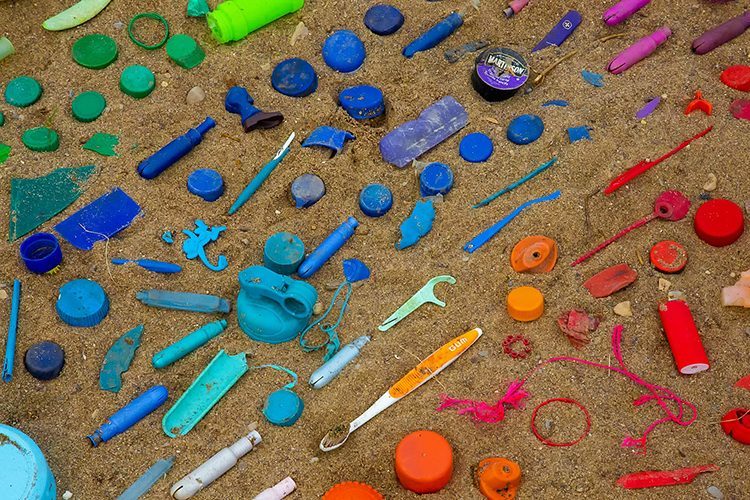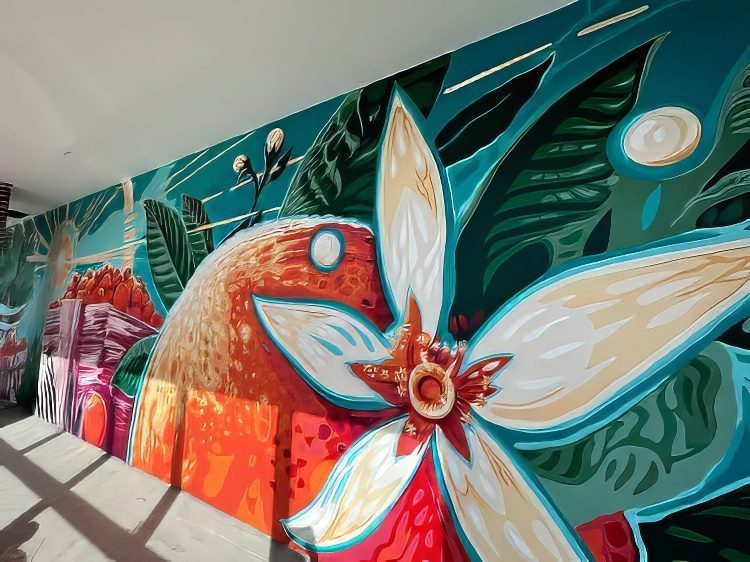There was a time when sustainability was considered a nice perk when looking at which brands to buy, but lately, the tide is turning. According to the Harvard Business Review, “we’re on the brink of a major shift in consumption patterns, where truly sustainable brands — those that make good on their promises to people and the planet — will seize the advantage from brands that make flimsy claims or that have not invested sufficiently in sustainability.” And it turns out that we’re fast approaching a tipping point where sustainability will transform from added benefit to baseline requirement.
So in addition to bonafide sustainability solutions, how can you further connect with customers to communicate your commitment to the environment? Through brand-based ecological art initiatives.
But why art and climate change? What is the intersection, exactly? And how do we define ecological art? Let’s take a deeper look at the efficacy of ecological art branding solutions and define clear dos and don’ts so you can integrate it effectively into your marketing strategy.
The relationship between art and climate change
At its core, art is essentially a form of language with a unique ability to explore and communicate complex ideas and concepts. And as an intrinsic part of our human nature, working with ecological art plays a powerful role in inspiring and implementing environmental change.
Climate change is a complex topic that can feel frightening, as it challenges us to accept responsibility for our actions and face our own mortality. It can also feel as though we’ve progressed to a point where we’re too late, and any action is futile.
But we like to remain optimistic and say that this isn’t true—and we have a shared social responsibility when it comes to saving the environment. And with ecological art, we harness the potential to unite a multitude of disciplines to have a one productive conversation.
Ecological art is more than environmental art in that it “involves functional ecological systems-restoration, as well as socially engaged, activist, community-based interventions. Ecological art also addresses politics, culture, economics, ethics and aesthetics as they impact the conditions of ecosystems.” In other words, ecological art has the ability to acknowledge the vast and varied systems that ultimately got us here.
But more importantly, ecological art also offers a path towards beautiful and inspired solutions, either in the ability to reuse discharged materials or activate larger social, political, and environmental change.
Some nuances
Climate change is a complex issue, and as such the art world has generated a few different approaches in terms of how we discuss it. Ecological art is ultimately concerned with ecological activism and the highlighting of issues, whereas land art shares similar values but leans more towards the conceptual. Art in nature is yet another form, and uses found materials to create thoughtful and engaging works.
Where to find ecological art
From relying on recycled materials to creating public artworks with Airlite, a paint which purifies polluted air in a process similar to photosynthesis, there’s no shortage of brilliant creatives using ecological art to take part in the conversation. Groups like CLIMARTE act as “an initiator, an educator, and a catalyst for artists and arts organizations to engage in climate-focused and socially engaged exhibitions and events.” They are also the founders of what is known to be the world’s first climate emergency gallery.
You can also find curators, like at ATP.art,, researchers, and even academics dedicated to documenting ecological art oriented artists, as you can see here in this wonderful list from UC Irvine’s Kathleen Deck.

Ecological art can mean so many things, including using recycled materials.
What is “greenwashing” and why should you avoid it?
If you plan to use ecological art as a part of your branding strategy, it’s crucial that your efforts—and larger company policies—are authentic. Never underestimate the intelligence of consumers: now more than ever, they are paying attention and even communicating directly with one another.
One recent trend that went viral, “greenwashing”, seems to particularly spark public ire. Defined as “the process of conveying a false impression or misleading information about how a company’s products are environmentally sound,” greenwashing involves making an unsubstantiated claim to deceive consumers into believing that a company is environmentally friendly or even has a positive environmental impact. Greenwashing often relies heavily on marketing, and even ecological art, to falsely transmit its message.
Why ecological art and advocacy matter in branding
The best branding is rooted in trust, and trust drives business outcomes. According to the Harvard Business Review, “highly trusted companies outperform others by up to 400% in terms of market value. These astonishing returns are realized because the marginal effect of trust on companies’ stocks grows as those companies earn trust.” In fact, the TrustID platform, which measures the public’s trust in individual companies, shows that “when a company’s score moves from 30 to 31, it sees a roughly 3% increase in expected stock returns. When scores climb from 60 to 61, the increase is 6%.”
With substantial jumps like that, you don’t need to be a business school graduate to understand that investing in the public’s trust translates to investing in your company’s success.
Ecological art speaks to the next generation
In their article, the Harvard Business Review also asked more than 350,000 customers aged 18 to 98 to gauge their perception of brands’ intent and competence. Their findings? Not only did sustainability stand out as a critical driver of intent, but there was also an important generational effect. “While both younger and older consumers care about brands’ competence (their quality and consistency), younger consumers’ trust in brands—and their resulting purchasing behavior—is much more strongly influenced by the brands’ positive intent.”
And more and more, sustainability and environmental impact are at the forefront of what the next generation is thinking about when it comes to choosing which companies to buy from. “When Gen Z and Millennial customers believe a brand cares about its impact on people and the planet, they are 27% more likely to purchase it than older generations are.” That’s a clear indicator of sustainability’s power to drive buying decisions, and considering the fact these younger generations are the future of the economy—they’re expected to outspend Boomers by 2030—perhaps we should be thinking about how we can authentically meet their desires.
Real-world initiatives in action
In addition to actively investing in their employees through things like quarterly stock benefits and company-matched retirement plans, Publix is also known for its deep commitment to the planet. In 2022, the company sent more than 54 million pounds of food waste-manufacturing byproducts to farmers to turn into animal feed while also switching from polystyrene containers to returnable plastic totes (thus eliminating 190,000 containers from their seafood department).
Their proven commitment to their values then ring true when it comes to their design initiatives, like in this store in Orlando, Florida. Featuring stunning floral elements by local artist Christian Stanley, the large-scale works not only function as a beautiful marketing tool, but customers know that behind the environmental art there stands a company that is genuinely devoted to bettering the environment, not relying on it to greenwash their business.

Christian Stanley created a stunning mural for this Orlando Publix.
The people have spoken and the research points to the same conclusions again and again: ethical practices matter when it comes to business. And more and more, consumers are concerned about sustainability and environmental impact, which translates to an innate attraction towards brands that highlight ecological art.
Especially with younger generations soon slated to outspend Boomers, the time is now when it comes to rethinking how the environment plays into your business initiatives, in addition to the art you choose. How do you plan to be on the cutting edge?
Have we convinced you of the power of ecological art? Are you thinking about using it to enhance your business? Let us know in the comments.
